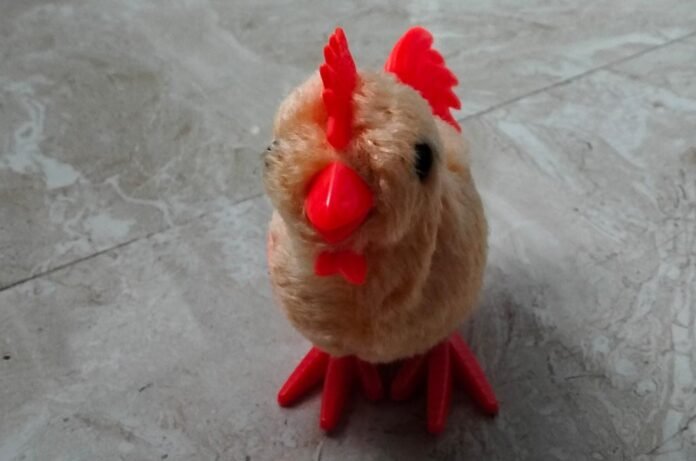The growing allure of sustainable living and farm-to-table eating habits has led to a resurgence of raising backyard poultry in urban, suburban, and rural communities alike. This initiative not only provides individuals with a sense of self-sufficiency through the production of fresh eggs but also introduces an educational component for families regarding animal care and food sources.
However, this well-intended practice comes with its own set of health considerations, primarily the risk of salmonella infections—a reality that many new poultry enthusiasts are unaware of. Despite their appearance of cleanliness and health, backyard fowl such as chickens and ducks can be carriers of Salmonella bacteria, presenting a hidden hazard to their caretakers and families. This juxtaposition of benefits and risks underscores the necessity of informed, responsible poultrykeeping to mitigate the threat of infection while enjoying the rewards of backyard poultry farming.
Understanding Salmonella:
Salmonella is a genus of rod-shaped, Gram-negative bacteria that is known to cause infections in both humans and animals, particularly through contaminated food and water sources. This bacteria can thrive in a variety of environments, making it a prevalent cause of foodborne illness worldwide. Salmonella infections, or salmonellosis, typically occur when individuals consume foods contaminated with the bacteria, such as undercooked poultry, eggs, or products contaminated by animal feces.
The bacteria can also spread through direct or indirect contact with infected animals, including household pets and backyard poultry, even if the animals do not show signs of illness. Symptoms of salmonellosis in humans usually develop 12 to 72 hours after exposure to the bacteria and can include diarrhea, fever, abdominal cramps, nausea, and vomiting. While these symptoms often resolve without treatment within 4 to 7 days, salmonellosis can lead to severe dehydration or may require medical attention in young children, elderly individuals, and those with compromised immune systems. Understanding the nature of Salmonella and how it spreads is crucial for preventing and managing infections, particularly for those involved in raising backyard poultry.
How Backyard Poultry Carries Salmonella:
Backyard poultry, such as chickens, ducks, and turkeys, can be carriers of Salmonella bacteria even when they appear healthy and show no signs of illness, turning them into silent vectors of disease. This characteristic feature of many types of Salmonella bacteria allows them to reside in the poultry’s gastrointestinal tract without causing harm to the bird. Consequently, these asymptomatic carriers shed the bacteria in their feces, which can contaminate their feathers, the ground where they roam, and anything they come into contact with, including feeders, waterers, and eggshells.
Environmental contamination is thus a significant factor in the spread of Salmonella, as the bacteria can survive for weeks to months in soil and water, depending on the conditions, thus broadening the potential for human exposure. Additionally, dust and dander from feathers can carry the bacteria, which may then be spread by wind or clothing, further increasing the risk of transmission.
Contact with these contaminated environments or direct handling of the birds, even with seemingly clean hands or surfaces, can lead to human infection if proper hygiene practices are not followed meticulously. This intricate chain of potential transmission underscores the importance of understanding how backyard poultry can inadvertently become conduits of Salmonella, despite the absence of visible signs of sickness in the animals themselves.
Transmission to Humans:
Humans can become infected with Salmonella from backyard poultry through a myriad of direct and indirect pathways. Direct contact includes handling the poultry themselves, such as touching chickens, ducks, or turkeys, often done during feeding, cleaning, or egg collection. This interaction allows bacteria from the bird’s feathers, feet, or beak to transfer to human hands and, if not washed properly, to the mouth or food, leading to infection.
Alternatively, indirect interaction occurs when individuals come into contact with items or surfaces contaminated by Salmonella present in bird populations. This can include anything within the birds’ living environment, such as bedding, feeders, and even the soil where they roam, which becomes contaminated through their feces.
Humans may unknowingly touch these contaminated surfaces and then touch their face or food, facilitating the bacteria’s entry into their system. Even activities considered low risk, like walking through areas where the birds have been, can result in the tracking of bacteria into clean areas on shoes, which underscores the wide net of Salmonella’s reach. These pathways of transmission highlight the critical need for stringent hygiene practices among backyard poultry enthusiasts to minimize the risk of infection.
Case Studies and Statistics:
salmonellosis cases, which have been directly linked to individuals keeping poultry in their backyards. This data comes from observations by the Centers for Disease Control and Prevention (CDC), highlighting a growing trend in Salmonella outbreaks associated with such practices. In one notable instance, a 2019 outbreak resulted in over 1,000 reported cases across 49 states, highlighting the widespread nature of the problem. Of these cases, 24% were children under the age of 5, underscoring the heightened vulnerability of young individuals to serious infections.
Further amplifying concern, the CDC found that many individuals affected by these outbreaks had engaged in risky behaviors, such as kissing or snuggling with their poultry, or allowing them into their homes. These behaviors, while often motivated by affection for the animals, significantly increased the risk of transmission.
Another case study involves an outbreak in 2020, where a distinct strain of Salmonella infantis was identified among patients who reported contact with backyard poultry. This outbreak alone accounted for 175 confirmed cases, 33 hospitalizations, and the unfortunate death of one individual, demonstrating the potentially severe outcomes of such infections.
These statistics and case studies illuminate the ongoing risks associated with backyard poultry. They underscore the necessity of educating individuals on proper handling and cleanliness techniques to reduce the risks associated with the spread of salmonellosis.
Prevention Strategies:
Implementing effective preventive measures is essential for backyard poultry owners to minimize the risk of Salmonella infections. Here are comprehensive strategies to ensure a safer environment for both the poultry and their human caretakers:
- Hygiene Practices: Always wash hands thoroughly with soap and water immediately after touching poultry, their eggs, or anything in their environment. In the absence of soap and water, resort to hand sanitizer as a temporary measure until proper handwashing is possible. Refrain from touching your face—particularly the mouth, nose, or eyes—until you’ve thoroughly cleaned your hands.
- Safe Handling: When handling birds, use dedicated clothing and shoes that you do not wear inside your home. After interacting with your poultry, change your clothes and shoes before entering your living spaces to prevent tracking bacteria indoors.
- Coop Maintenance: Clean and disinfect the poultry coop regularly to eliminate potential Salmonella hotspots. This includes changing bedding frequently and ensuring that feeders and waterers are sanitized regularly to prevent the build-up of feces and bacteria.
- Egg Handling: Collect eggs daily to minimize the chances of them becoming contaminated with feces. Wash your hands after collecting eggs, and clean any dirt or feces from the eggs with fine sandpaper, a brush, or a cloth. It’s advisable not to cleanse eggs to prevent bacteria from seeping through the shell. Placing eggs in a refrigerator is recommended to curb bacterial growth.
- Isolate Sick Birds: Monitor your flock for signs of illness and isolate sick birds immediately to prevent the spread of diseases like Salmonella. For precise diagnosis and treatment options, seek advice from a poultry-specialized veterinarian.
- Educate Family Members: Teach everyone in the household, especially children, the right way to interact with poultry. Discourage kissing, snuggling, or eating/drinking around the birds. Make sure children understand the importance of washing their hands after touching the birds or anything in their environment.
- Limit Bird Access: Avoid bringing backyard poultry into your home, particularly in spaces where food is prepped, served, or eaten. Limiting the birds’ access to human living spaces plays a crucial role in reducing Salmonella transmission risk.
By adhering to these preventive practices, backyard poultry enthusiasts can enjoy the rewards of their hobby while significantly reducing the risk of Salmonella infection for themselves, their families, and their communities.




